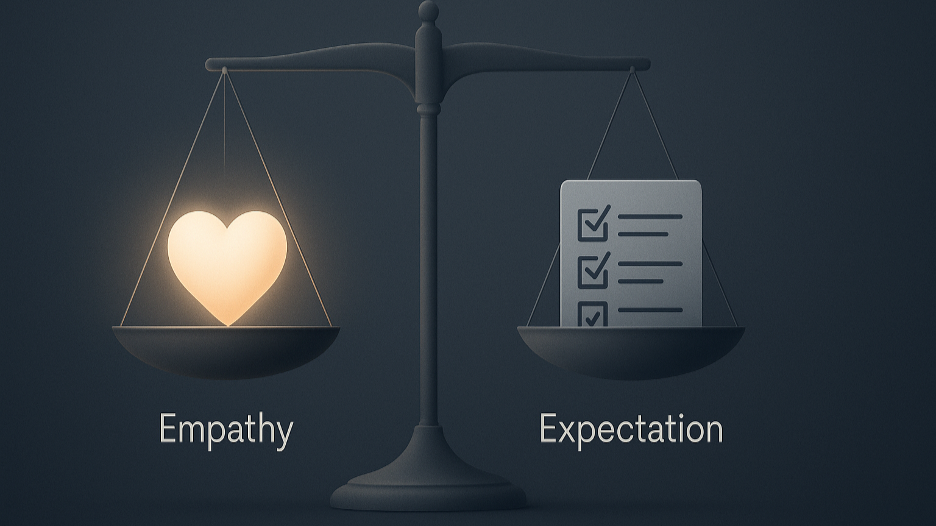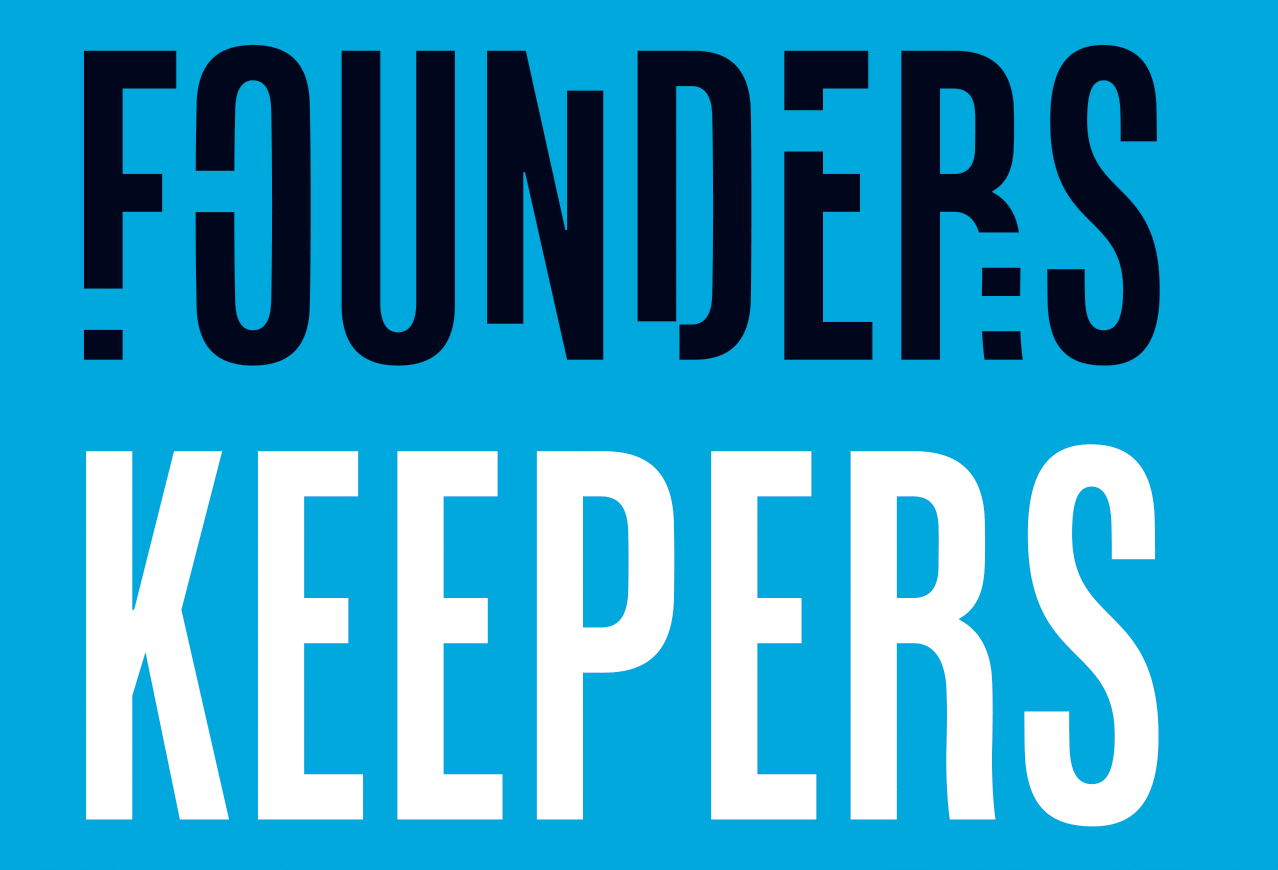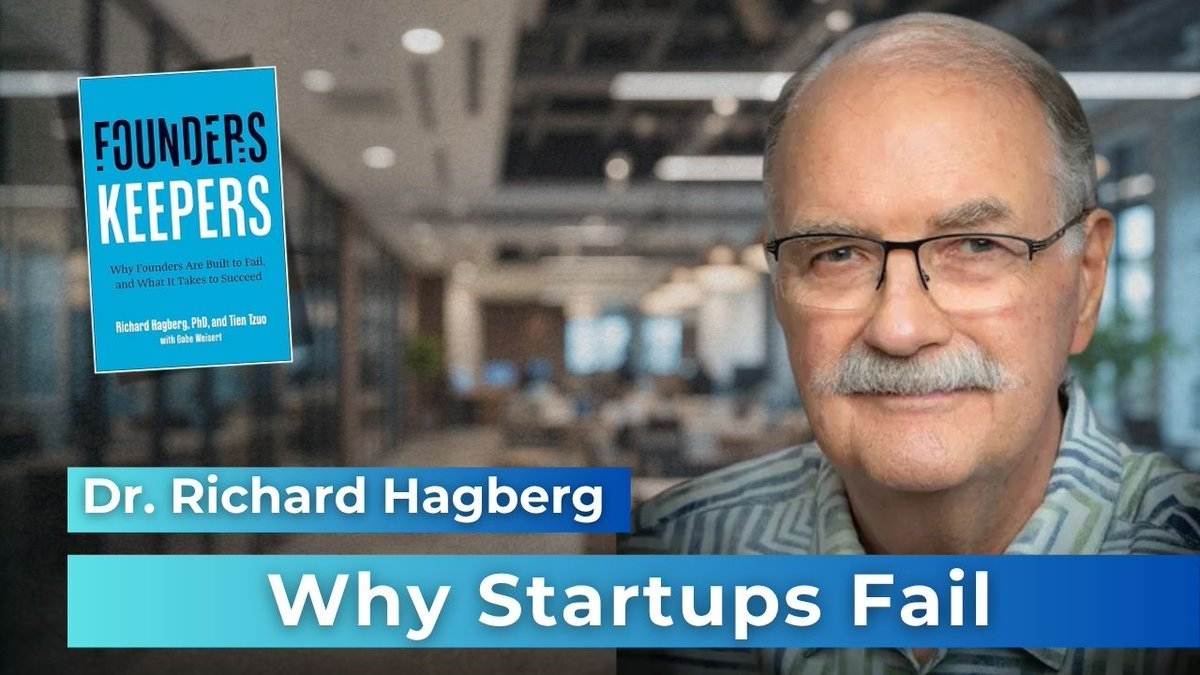Article
The Hidden Dangers of Startup Leadership: 10 Founder Traits That Undermine Growth
November 18, 2024

Startups might be thrilling, but the cold truth is that most of them fail—and it’s often the founders themselves who unknowingly set the stage for collapse. After over 40 years of coaching founders and conducting extensive research on the financial outcomes of 122 startups, I’ve come to a sobering conclusion: the traits that drive founders to launch and grow companies are often the same traits that cause them to sabotage their own success. My research, I looked at over 50 personality traits and 46 leadership competencies on 360 ratings and then looked at financial performance as measured by MOIC (Multiple of Invested Capital). This revealed a stark truth—founder behavior can either drive extraordinary returns or lead to catastrophic failure.
But here’s the thing: the damage goes far beyond financial results. When a founder struggles with certain destructive traits, it’s not just the investors who feel the impact—employees, customers, partners, and the broader community all suffer. These self-sabotaging behaviors ripple outward, slowly eroding the business from within. The tension between a founder’s strengths and their weaknesses can make or break the company, impacting every stakeholder who depends on its success.
If you’re a founder, employee, investor, or someone with a stake in a growing company, this isn’t just about making the numbers work. It’s about building a business that sustains growth and positively impacts everyone involved. But when founders don’t get out of their own way, the fallout can be widespread and irreversible. The following are 10 common traits among founders that can fuel early success but eventually limit a startup’s ability to scale—and even worse, lead to failure and cause deep, personal costs for everyone.
1. Impulsivity: The Fast Lane to Team Burnout and Customer Confusion
In the startup world, agility is a prized quality. Founders often pride themselves on being quick to seize opportunities and pivot. But when impulsivity takes over—when every new idea becomes a priority without careful consideration—the entire company can lose its focus.
Stakeholder Impact: Employees feel the brunt of impulsive decisions. Constantly shifting priorities lead to burnout as they struggle to keep up with the latest direction. Customers get confused when the product or service changes frequently, leading to dissatisfaction and lost trust. Investors, of course, see wasted resources and a lack of focus, which directly affects returns.
What’s the Fix? Before jumping into a new idea, create a system of checks. Implement a "cooling-off" period where you evaluate whether the new initiative aligns with long-term goals. Use a trusted advisory group or senior team members to review the impact of each decision, ensuring it benefits the company as a whole before it derails the team’s focus.
2. Control Freak Tendencies: Creating a Founder Bottleneck That Frustrates Everyone
Founders who feel the need to oversee every decision often create a culture where nothing moves without their approval. This might work in the early days when a founder can handle everything, but as the company grows, micromanagement becomes a major issue.
Stakeholder Impact: Employees feel disempowered and stifled by a lack of autonomy. Talented team members often leave because they don’t feel trusted or valued. Customers may experience delays in product releases or service because decisions are constantly bottlenecked at the founder level. Investors see a business that can’t scale because the founder refuses to let go.
What’s the Fix? Start delegating, even with small tasks. Build a leadership structure that allows for independent decision-making and set clear guidelines for who’s responsible for what. Trust your team’s ability to execute without you hovering over every detail. Allow leaders to grow within the company by empowering them to make key decisions.
3. Poor Conflict Resolution: Poisoning Team Culture and Alienating Customers
Conflict is inevitable in any startup, but how it’s handled can make or break the company. Some founders avoid conflict at all costs, allowing tensions to fester, while others react aggressively, shutting down any constructive dialogue.
Stakeholder Impact: Employees feel unsafe in an environment where conflicts are mishandled or ignored, leading to low morale and high turnover. Customers may pick up on these internal tensions, especially if they lead to poor service or inconsistent products. Partners and suppliers may hesitate to work with a company known for a toxic internal culture, hurting growth opportunities. Investors lose confidence when they see leadership incapable of fostering healthy team dynamics.
What’s the Fix? Commit to learning conflict resolution techniques, whether through training or coaching. Build a culture where feedback is encouraged, and disagreements are resolved constructively. Model healthy conflict resolution by addressing issues head-on rather than avoiding them and ensure that your leadership team follows suit.
4. Narcissism and Arrogance: Alienating Everyone Who Helps You Succeed
It’s no secret that many founders are confident to the point of arrogance. While a strong belief in your vision is critical, being dismissive of others’ input or assuming that you’re always the smartest person in the room can severely damage your relationships.
Stakeholder Impact: Employees quickly become disengaged when their insights are ignored, especially if they feel their contributions are undervalued. This leads to poor team morale and high turnover. Customers suffer when a founder’s arrogance blinds them to market feedback, resulting in products that miss the mark. Partners and industry peers may avoid collaborating with an overly arrogant leader, limiting growth opportunities. Investors shy away from founders who think they know it all, as this attitude often blocks learning and adaptability.
What’s the Fix? Practice humility and active listening. Regularly seek input from your team and advisors, and take it seriously. Surround yourself with people who will challenge your assumptions. Show your team that their ideas matter by acknowledging their contributions and acting on their insights when appropriate.
5. Fear of Letting Go: Stifling Growth and Talent Development
Many founders are driven by a fear that if they hand off responsibilities, things will fall apart. This fear can manifest as micromanagement or an inability to delegate, which suffocates the company’s ability to grow.
Stakeholder Impact: Employees feel micromanaged and become frustrated with their lack of autonomy and growth opportunities. The company becomes reliant on the founder for every major decision, limiting the development of a capable leadership team. Customers may experience slower responses or delays as the founder juggles too many tasks. Investors recognize that without delegation, scaling is impossible, limiting their return on investment.
What’s the Fix? Shift your mindset from "doing" to "leading." Identify key people who can take on leadership roles, and mentor them to handle responsibilities. Let them lead without constantly stepping in. Trust your systems and your people, and focus on long-term strategy rather than day-to-day operations.
6. Lack of Focus: Disorienting the Team and Confusing the Market
Founders are often idea generators, which can be a blessing and a curse. A lack of focus, however, means constantly shifting goals and priorities. While new ideas might seem exciting, without a clear direction, the company can lose its way.
Stakeholder Impact: Employees become overwhelmed when priorities change too often, leading to confusion and burnout. The market may struggle to understand what your company actually does if messaging and product offerings change frequently. Customers may lose faith in your company’s consistency. Investors notice a lack of discipline and focus, which signals an inability to scale.
What’s the Fix? Implement a clear framework for setting priorities. Use methods like OKRs (Objectives and Key Results) to keep the team aligned on specific, measurable goals. Before launching new initiatives, ensure they fit into the broader strategy. Communicate these priorities clearly and often to avoid confusion.
7. Inability to Handle Stress: Creating a Toxic Culture That Affects Everyone
Running a startup is inherently stressful, but founders who don’t manage stress well often create a tense, high-pressure work environment that trickles down to the entire organization.
Stakeholder Impact: Employees feel constantly stressed and burned out in a high-pressure culture, leading to high turnover and low productivity. A stressed-out founder may make poor decisions, which can damage customer relationships and erode trust in the company. Investors worry about leadership sustainability when they see a founder on the edge of burnout.
What’s the Fix? Prioritize stress management by setting clear work-life boundaries for yourself and your team. Adopt stress-reduction practices like meditation or regular exercise. Build a leadership team that shares responsibilities to reduce the pressure on any one person. Ensure that your company culture supports balance and well-being, not just hustle.
8. Inconsistent Trust in Others: Undermining Team Cohesion
Some founders trust only a select few within their organization, which leads to unequal power dynamics. The inner circle gets more responsibility, while others are left feeling sidelined.
Stakeholder Impact: Employees who aren’t part of the “trusted few” become disengaged, feeling that they don’t have a real stake in the company’s success. This lack of trust stifles innovation and collaboration, preventing the company from reaching its full potential. Customers may sense instability or inconsistency in service when decision-making is bottlenecked among a select few. Investors recognize that an over-reliance on a small inner circle can limit scalability and sustainability.
What’s the Fix? Build trust across the organization by empowering a broader group of employees to make decisions. Create a culture of transparency, where responsibilities are clearly defined and trust is distributed evenly. Encourage collaboration between teams and leaders at all levels.
9. Avoiding Accountability: Fostering a Culture of Mediocrity Founders who blur the lines between friendship and leadership often struggle with accountability. They may avoid holding themselves or others responsible for underperformance, which creates a culture where mediocrity thrives.
Stakeholder Impact: Employees become demotivated when they see underperformance go unchecked, leading to inconsistent results and low morale. A lack of accountability hurts customer experience, as sloppy work or poor service isn’t corrected. Investors are alarmed when they see a lack of discipline, which suggests that the company won’t meet its targets.
What’s the Fix? Implement clear performance metrics for yourself and your team and hold regular reviews to ensure accountability. Address underperformance head-on and create systems for recognizing and rewarding excellence. This helps to maintain a high standard across the board.
10. Poor Emotional Intelligence: Driving a Wedge Between Leadership and Teams
Founders who lack emotional intelligence (EQ) struggle to connect with their teams. They may be brilliant strategists, but if they don’t understand or manage their own emotions—or those of others—they’ll struggle to lead effectively.
Stakeholder Impact: Employees disengage in environments where they feel misunderstood or undervalued. This leads to low morale, poor communication, and high turnover. Customers suffer when the lack of emotional intelligence leads to bad decisions or poor handling of complaints. Investors know that a company with poor internal dynamics will struggle to execute effectively and grow.
What’s the Fix? Invest in developing your emotional intelligence by working with a coach or taking EQ training. Practice active listening and empathy with your team. Regularly check in with employees not just on performance, but also on well-being. Creating strong emotional connections within your team builds trust and fosters a positive work culture.
Conclusion: Founders, It’s Not Just About You It’s easy to focus on numbers when running a startup, but success is about more than revenue or valuation. It’s about how well you lead, and leadership is a skill that can make or break the experience for everyone involved—employees, customers, partners, and investors alike. The traits that make you a scrappy, bold founder might also be the very traits that sabotage your company’s long-term success.
Recognize these behaviors in yourself? Good. That’s the first step to addressing them. Whether it’s learning to delegate, developing emotional intelligence, or managing stress, improving yourself as a leader will ripple out to everyone who’s counting on your company to succeed. You owe it to your employees, your customers, your investors—and ultimately, to yourself—to be the best leader you can be. The stakes are high, and the consequences of self-sabotage can be devastating. But with the right self-awareness and action, you can turn things around and lead your company to success that benefits everyone.
But here’s the thing: the damage goes far beyond financial results. When a founder struggles with certain destructive traits, it’s not just the investors who feel the impact—employees, customers, partners, and the broader community all suffer. These self-sabotaging behaviors ripple outward, slowly eroding the business from within. The tension between a founder’s strengths and their weaknesses can make or break the company, impacting every stakeholder who depends on its success.
If you’re a founder, employee, investor, or someone with a stake in a growing company, this isn’t just about making the numbers work. It’s about building a business that sustains growth and positively impacts everyone involved. But when founders don’t get out of their own way, the fallout can be widespread and irreversible. The following are 10 common traits among founders that can fuel early success but eventually limit a startup’s ability to scale—and even worse, lead to failure and cause deep, personal costs for everyone.
1. Impulsivity: The Fast Lane to Team Burnout and Customer Confusion
In the startup world, agility is a prized quality. Founders often pride themselves on being quick to seize opportunities and pivot. But when impulsivity takes over—when every new idea becomes a priority without careful consideration—the entire company can lose its focus.
Stakeholder Impact: Employees feel the brunt of impulsive decisions. Constantly shifting priorities lead to burnout as they struggle to keep up with the latest direction. Customers get confused when the product or service changes frequently, leading to dissatisfaction and lost trust. Investors, of course, see wasted resources and a lack of focus, which directly affects returns.
What’s the Fix? Before jumping into a new idea, create a system of checks. Implement a "cooling-off" period where you evaluate whether the new initiative aligns with long-term goals. Use a trusted advisory group or senior team members to review the impact of each decision, ensuring it benefits the company as a whole before it derails the team’s focus.
2. Control Freak Tendencies: Creating a Founder Bottleneck That Frustrates Everyone
Founders who feel the need to oversee every decision often create a culture where nothing moves without their approval. This might work in the early days when a founder can handle everything, but as the company grows, micromanagement becomes a major issue.
Stakeholder Impact: Employees feel disempowered and stifled by a lack of autonomy. Talented team members often leave because they don’t feel trusted or valued. Customers may experience delays in product releases or service because decisions are constantly bottlenecked at the founder level. Investors see a business that can’t scale because the founder refuses to let go.
What’s the Fix? Start delegating, even with small tasks. Build a leadership structure that allows for independent decision-making and set clear guidelines for who’s responsible for what. Trust your team’s ability to execute without you hovering over every detail. Allow leaders to grow within the company by empowering them to make key decisions.
3. Poor Conflict Resolution: Poisoning Team Culture and Alienating Customers
Conflict is inevitable in any startup, but how it’s handled can make or break the company. Some founders avoid conflict at all costs, allowing tensions to fester, while others react aggressively, shutting down any constructive dialogue.
Stakeholder Impact: Employees feel unsafe in an environment where conflicts are mishandled or ignored, leading to low morale and high turnover. Customers may pick up on these internal tensions, especially if they lead to poor service or inconsistent products. Partners and suppliers may hesitate to work with a company known for a toxic internal culture, hurting growth opportunities. Investors lose confidence when they see leadership incapable of fostering healthy team dynamics.
What’s the Fix? Commit to learning conflict resolution techniques, whether through training or coaching. Build a culture where feedback is encouraged, and disagreements are resolved constructively. Model healthy conflict resolution by addressing issues head-on rather than avoiding them and ensure that your leadership team follows suit.
4. Narcissism and Arrogance: Alienating Everyone Who Helps You Succeed
It’s no secret that many founders are confident to the point of arrogance. While a strong belief in your vision is critical, being dismissive of others’ input or assuming that you’re always the smartest person in the room can severely damage your relationships.
Stakeholder Impact: Employees quickly become disengaged when their insights are ignored, especially if they feel their contributions are undervalued. This leads to poor team morale and high turnover. Customers suffer when a founder’s arrogance blinds them to market feedback, resulting in products that miss the mark. Partners and industry peers may avoid collaborating with an overly arrogant leader, limiting growth opportunities. Investors shy away from founders who think they know it all, as this attitude often blocks learning and adaptability.
What’s the Fix? Practice humility and active listening. Regularly seek input from your team and advisors, and take it seriously. Surround yourself with people who will challenge your assumptions. Show your team that their ideas matter by acknowledging their contributions and acting on their insights when appropriate.
5. Fear of Letting Go: Stifling Growth and Talent Development
Many founders are driven by a fear that if they hand off responsibilities, things will fall apart. This fear can manifest as micromanagement or an inability to delegate, which suffocates the company’s ability to grow.
Stakeholder Impact: Employees feel micromanaged and become frustrated with their lack of autonomy and growth opportunities. The company becomes reliant on the founder for every major decision, limiting the development of a capable leadership team. Customers may experience slower responses or delays as the founder juggles too many tasks. Investors recognize that without delegation, scaling is impossible, limiting their return on investment.
What’s the Fix? Shift your mindset from "doing" to "leading." Identify key people who can take on leadership roles, and mentor them to handle responsibilities. Let them lead without constantly stepping in. Trust your systems and your people, and focus on long-term strategy rather than day-to-day operations.
6. Lack of Focus: Disorienting the Team and Confusing the Market
Founders are often idea generators, which can be a blessing and a curse. A lack of focus, however, means constantly shifting goals and priorities. While new ideas might seem exciting, without a clear direction, the company can lose its way.
Stakeholder Impact: Employees become overwhelmed when priorities change too often, leading to confusion and burnout. The market may struggle to understand what your company actually does if messaging and product offerings change frequently. Customers may lose faith in your company’s consistency. Investors notice a lack of discipline and focus, which signals an inability to scale.
What’s the Fix? Implement a clear framework for setting priorities. Use methods like OKRs (Objectives and Key Results) to keep the team aligned on specific, measurable goals. Before launching new initiatives, ensure they fit into the broader strategy. Communicate these priorities clearly and often to avoid confusion.
7. Inability to Handle Stress: Creating a Toxic Culture That Affects Everyone
Running a startup is inherently stressful, but founders who don’t manage stress well often create a tense, high-pressure work environment that trickles down to the entire organization.
Stakeholder Impact: Employees feel constantly stressed and burned out in a high-pressure culture, leading to high turnover and low productivity. A stressed-out founder may make poor decisions, which can damage customer relationships and erode trust in the company. Investors worry about leadership sustainability when they see a founder on the edge of burnout.
What’s the Fix? Prioritize stress management by setting clear work-life boundaries for yourself and your team. Adopt stress-reduction practices like meditation or regular exercise. Build a leadership team that shares responsibilities to reduce the pressure on any one person. Ensure that your company culture supports balance and well-being, not just hustle.
8. Inconsistent Trust in Others: Undermining Team Cohesion
Some founders trust only a select few within their organization, which leads to unequal power dynamics. The inner circle gets more responsibility, while others are left feeling sidelined.
Stakeholder Impact: Employees who aren’t part of the “trusted few” become disengaged, feeling that they don’t have a real stake in the company’s success. This lack of trust stifles innovation and collaboration, preventing the company from reaching its full potential. Customers may sense instability or inconsistency in service when decision-making is bottlenecked among a select few. Investors recognize that an over-reliance on a small inner circle can limit scalability and sustainability.
What’s the Fix? Build trust across the organization by empowering a broader group of employees to make decisions. Create a culture of transparency, where responsibilities are clearly defined and trust is distributed evenly. Encourage collaboration between teams and leaders at all levels.
9. Avoiding Accountability: Fostering a Culture of Mediocrity Founders who blur the lines between friendship and leadership often struggle with accountability. They may avoid holding themselves or others responsible for underperformance, which creates a culture where mediocrity thrives.
Stakeholder Impact: Employees become demotivated when they see underperformance go unchecked, leading to inconsistent results and low morale. A lack of accountability hurts customer experience, as sloppy work or poor service isn’t corrected. Investors are alarmed when they see a lack of discipline, which suggests that the company won’t meet its targets.
What’s the Fix? Implement clear performance metrics for yourself and your team and hold regular reviews to ensure accountability. Address underperformance head-on and create systems for recognizing and rewarding excellence. This helps to maintain a high standard across the board.
10. Poor Emotional Intelligence: Driving a Wedge Between Leadership and Teams
Founders who lack emotional intelligence (EQ) struggle to connect with their teams. They may be brilliant strategists, but if they don’t understand or manage their own emotions—or those of others—they’ll struggle to lead effectively.
Stakeholder Impact: Employees disengage in environments where they feel misunderstood or undervalued. This leads to low morale, poor communication, and high turnover. Customers suffer when the lack of emotional intelligence leads to bad decisions or poor handling of complaints. Investors know that a company with poor internal dynamics will struggle to execute effectively and grow.
What’s the Fix? Invest in developing your emotional intelligence by working with a coach or taking EQ training. Practice active listening and empathy with your team. Regularly check in with employees not just on performance, but also on well-being. Creating strong emotional connections within your team builds trust and fosters a positive work culture.
Conclusion: Founders, It’s Not Just About You It’s easy to focus on numbers when running a startup, but success is about more than revenue or valuation. It’s about how well you lead, and leadership is a skill that can make or break the experience for everyone involved—employees, customers, partners, and investors alike. The traits that make you a scrappy, bold founder might also be the very traits that sabotage your company’s long-term success.
Recognize these behaviors in yourself? Good. That’s the first step to addressing them. Whether it’s learning to delegate, developing emotional intelligence, or managing stress, improving yourself as a leader will ripple out to everyone who’s counting on your company to succeed. You owe it to your employees, your customers, your investors—and ultimately, to yourself—to be the best leader you can be. The stakes are high, and the consequences of self-sabotage can be devastating. But with the right self-awareness and action, you can turn things around and lead your company to success that benefits everyone.
share this
Related Articles
Related Articles

The Nicest Boss in the World He was adored. He remembered birthdays, checked in on people’s families, and stayed late helping fix slides no one asked him to touch. His team called him “the best boss we’ve ever had.” He was also running on fumes. Behind the warm smile was a leader quietly burning out — drowning in everyone else’s problems, too empathetic for his own good. If you’re a leader who prides yourself on caring deeply, this might sting a little: empathy, taken too far, becomes control in disguise. Empathy’s Secret Shadow Empathy is essential for leadership. It builds loyalty, safety, and trust. But the same trait that makes people feel seen can also make them dependent. When you can’t tolerate someone else’s discomfort, you start protecting them from it. You step in to fix, to soothe, to rescue. It looks noble. It feels generous. But it quietly steals agency — theirs and yours. Your team stops growing because you’re doing their emotional labor. You stop leading because you’re managing feelings instead of outcomes. That’s the hidden cost of care. The Emotional Guilt Loop Over-empathetic leaders live in a constant tug-of-war between compassion and guilt. They think: “They’re already stretched — I can’t pile more on.” “If I push harder, I’ll seem uncaring.” “I’ll just do it myself; it’s easier.” Sound familiar? That’s not empathy anymore. That’s guilt masquerading as kindness. And guilt makes terrible business decisions. Because guilt doesn’t guide you toward what’s right. It just steers you away from what feels uncomfortable. A Founder’s Story One founder I coached, let’s call her Lina, led with heart. She built her company around “people first.” And she meant it. But somewhere along the way, “people first” turned into “me last.” She couldn’t say no. She kept saving underperformers, approving vacations during crunch time, rewriting others’ work to spare them stress. Her team adored her — until they didn’t. Because beneath her helpfulness was quiet resentment. And resentment always leaks. The breakthrough came when she realized something simple but hard: “I was protecting people from learning the hard parts of growth.” That’s when she started leading again instead of parenting. When Caring Becomes Control Here’s the paradox: the more you care, the more you risk over-controlling. You jump in to fix not because you don’t trust them, but because you feel for them. It’s empathy turned inward — I can’t stand watching them struggle. But leadership isn’t about eliminating discomfort. It’s about using it wisely. People grow by stretching, not by being spared. When you save someone from every failure, you’re also saving them from competence. The Biology of Burnout Chronic empathy triggers chronic stress. When you absorb other people’s emotions all day, your nervous system never gets a break. You start mirroring everyone’s anxiety like an emotional amplifier. Your brain thinks you’re in crisis — even when you’re not. That’s why over-caring leaders are often the first to burn out. Their compassion becomes constant cortisol. The irony? The leaders who want to create safety for others end up unsafe themselves. How to Care Without Carrying Feel, then filter. It’s okay to feel someone’s frustration. Just don’t keep it. Ask: “Is this mine to hold?” Help through accountability. Say, “I know this is tough, and I also need you to take ownership.” The and matters. Let discomfort be developmental. When a team member struggles, resist rescuing. Stay present, not protective. Coach before you comfort. Instead of “Don’t worry,” try, “What do you think your next move is?” Reframe empathy as empowerment. Caring isn’t about absorbing pain; it’s about believing people can handle it. Funny but True One exec I worked with told me, “Every time I stop helping, I feel like a jerk.” I said, “No — you feel like a leader. It just takes a while to tell the difference.” He laughed and said, “So… you’re telling me leadership feels bad at first?” I said, “Exactly. Growth always does.” The Cultural Ripple Effect When leaders overfunction, teams underfunction. When leaders hold space instead of taking space, teams rise. Empathy should expand others, not consume you. The healthiest cultures balance care and candor — support and stretch. They normalize struggle as part of the process instead of something to be hidden or rescued. That’s what real compassion looks like in motion. The Maturity of Tough Empathy Empathy without boundaries is exhaustion. Empathy with boundaries is wisdom. The mature version of empathy doesn’t say, “I’ll protect you.” It says, “I believe you can handle this — and I’ll walk beside you while you do.” That’s not cold. That’s developmental. Your Challenge This Week Notice where you’re rescuing someone instead of coaching them. Pause before you step in. Ask yourself, Am I helping because they need it — or because I need to feel helpful? Then take one small risk: let them handle it. They’ll probably surprise you. And you’ll feel lighter than you have in months. Final Word Caring is beautiful. It’s what makes you human. But unchecked empathy turns leaders into emotional pack mules — carrying what was never theirs to bear. Real leadership is still full of heart. It just remembers that compassion without accountability isn’t love. It’s fear. And the moment you stop rescuing everyone, you finally start freeing them — and yourself.s)

The Smart Leader’s Blind Spot It’s strange how often the smartest people make the worst decisions under pressure. They don’t lose IQ. They lose perspective. I’ve seen this happen more times than I can count. A sharp, decisive executive starts second-guessing every move. They overanalyze, overwork, and overcontrol — all in the name of being “thorough.” They think they’re being rational. But underneath the spreadsheets and meetings is something far less logical. It’s fear. The Fear That Doesn’t Look Like Fear We think of fear as panic — sweating, shaking, obvious. But most leadership fear hides behind competence. It shows up as perfectionism, busyness, overcommitment, indecision. It sounds like, “Let’s get more data.” “Let’s not rush this.” “Let’s keep this one close.” That’s not analysis. That’s avoidance with a better vocabulary. When fear runs the show, the goal subtly shifts from making the right decision to avoiding the wrong one. And those two things are worlds apart. The Cost of Fear-Based Leadership When leaders operate from fear, everything tightens. They stop listening. They rush to defend. They play small when the company needs boldness. They keep people who are loyal over people who are competent — because loyalty feels safer. And here’s the real tragedy: the team starts copying the fear. They become cautious, compliant, quiet. Pretty soon, no one’s leading anymore. They’re all managing risk — mostly emotional risk. A CEO’s Moment of Truth One CEO I coached — brilliant, confident, deeply human — was terrified of being wrong in front of his board. He masked it well. On the outside: decisive. Inside: a constant hum of anxiety. After a tough quarter, he admitted, “I realized half my decisions weren’t based on strategy — they were based on protecting my image.” That moment of honesty was the start of his maturity curve. Once he could name the fear, it stopped running his show. He didn’t become fearless. He became aware. And awareness is what turns reaction into wisdom. Why Fear Feels Safer Than Clarity Fear has a strange way of convincing us it’s caution. Caution whispers, “Slow down and look.” Fear screams, “Don’t move.” The first sharpens judgment. The second paralyzes it. And the more we listen to fear, the more it disguises itself as prudence. That’s why emotional maturity isn’t about suppressing fear. It’s about being able to say, “Ah, that’s fear talking — not fact.” How Fear Distorts the Mind Here’s what happens when fear hijacks leadership: Tunnel vision: You fixate on the immediate threat and forget the big picture. Confirmation bias: You start looking for data that validates your anxiety. Short-termism: You make safe decisions that feel good now and cause pain later. Blame shifting: You protect your ego by pushing ownership outward. The mind gets smaller. The leader gets reactive. The company gets stuck. The Maturity Shift Emotional maturity isn’t about being unshakable. It’s about staying curious in the presence of fear. Mature leaders don’t pretend they’re fearless. They just don’t let fear make the decisions. They pause, breathe, and ask, “What part of this is data, and what part is my insecurity talking?” That single question can change everything. A Founder’s Story A founder I worked with once said, “I’m not afraid — I just have high standards.” But as we unpacked it, he realized those “high standards” were actually a way to control outcomes. He feared disappointment — his own and others’. When he finally stopped trying to protect his reputation and started protecting his clarity, his decisions got faster and cleaner. The business didn’t just grow — it started breathing again. Because when you stop trying to look right, you finally have room to be right. Funny, But True I once asked a CEO what he’d do differently if he weren’t afraid of failing. He said, “Probably the same things I’m doing now — just with less Advil.” That’s the thing: most leaders already know what to do. Fear just makes it hurt more. How to Lead Without Fear (Even When It’s There) Name it early. The sooner you recognize fear, the less power it has. Ask yourself, “What’s the story fear’s telling me right now?” Reframe mistakes as tuition. You’ll still pay for errors — might as well learn something from them. Separate identity from outcome. A bad decision doesn’t mean a bad leader. It means a leader who’s still learning — like everyone else. Keep one truth-teller nearby. Someone who loves you enough to tell you when you’re acting from ego. Practice micro-bravery. Tell one hard truth a day. Say “I don’t know” once a week. Let discomfort become strength training. The Paradox of Fear Fear doesn’t make you weak. It means you care. But if you never face it, it becomes your compass — and it always points backward. Courage, maturity, clarity — they’re not opposites of fear. They’re what happen when you stop running from it. Your Challenge This Week Next time you feel that knot in your stomach — before a board meeting, a tough conversation, a high-stakes call — pause. Ask yourself: What am I afraid might happen? Then ask: What might happen if I act from clarity instead of fear? That’s not therapy. That’s leadership hygiene. Final Word The mark of maturity isn’t fearlessness. It’s self-awareness. You can’t control your fear. But you can choose whether it sits in the driver’s seat or the passenger’s. Great leaders don’t wait for fear to disappear. They lead with it beside them — quietly, respectfully — but never in charge.

The Charisma Illusion Charisma gets all the press. It fills conference rooms, wins funding rounds, and dominates the LinkedIn highlight reel. We treat it like the gold standard of leadership — as if volume equals vision. But charisma is a sugar high. It spikes energy, then crashes trust. Composure, on the other hand — quiet, grounded, centered composure — is the kind of influence that lasts. It doesn’t light up a room; it settles one. When things go sideways, it’s not the charismatic leader people look for. It’s the calm one. The Crisis Test Picture this. The product just failed. The client’s furious. Your team’s pacing like trapped cats. Two leaders walk in. One storms into action — loud, fast, “What the hell happened here?” The other walks in slowly, looks around, and says, “Okay, let’s breathe. What do we know so far?” The first one gets attention. The second one gets results. That’s emotional geometry — the calmest person in the room reshapes everyone else’s state. Why Calm Is the Real Power When you stay composed, you’re not just managing your emotions — you’re regulating the entire system. Here’s the neuroscience behind it: people mirror the nervous system of whoever has the most authority. If you’re grounded, they sync to your rhythm. If you’re frantic, they sync to that instead. You don’t need to lecture anyone on resilience. You just have to model it. It’s not charisma that makes people trust you; it’s the quiet sense that you’re not going to lose your mind when things get hard. Charisma’s Half-Life Charisma is a spark. It can ignite a team — but if there’s no composure beneath it, the whole thing burns out. You’ve seen this movie before: the leader who rallies everyone with a passionate all-hands speech, then disappears into reaction mode when things get messy. Charisma without composure is like caffeine without sleep. You’re awake, but you’re not steady. Composure doesn’t get the applause. It gets the loyalty. A Founder’s Story One founder I worked with — I’ll call him David — was known for being a “high-voltage” guy. He could pitch an investor, fire up a crowd, or talk anyone into anything. But his team? They were walking on eggshells. His energy filled every room, but it left no oxygen for anyone else. During one session, I asked, “When you raise your voice, what happens to theirs?” He went quiet. That was the moment he understood that his passion — the thing he was most proud of — had become the team’s anxiety. A year later, his team described him differently: “He’s still intense, but steady. We trust him more now.” He didn’t lose charisma; he layered it with composure. The Calm Before the Influence Here’s what composure actually looks like: You listen longer. Because real influence starts with attention, not argument. You breathe before reacting. That pause isn’t weakness; it’s power management. You let silence do the work. Charisma fills every space; composure creates space for others to step in. You own your tone. You realize your sighs, your speed, your face — they’re all communication tools whether you intend them or not. You choose steadiness over certainty. People don’t need you to know everything. They just need to know you’re okay not knowing. Funny But True A client once told me, “When I’m calm in a meeting, people assume I’m hiding something.” I said, “Good. Let them wonder.” That’s how unfamiliar calm has become. In some cultures, composure looks radical — even suspicious. But it’s exactly what people crave in a world that never shuts up. Why Charisma Is Easier (and More Addictive) Charisma gets feedback. You see the energy rise, you feel the applause. It’s visible. Composure feels invisible — until you lose it. No one thanks you for staying calm during a crisis. But they remember it when deciding whether to follow you into the next one. That’s why maturity in leadership means getting comfortable with the quiet wins — the meeting that didn’t spiral, the argument that didn’t happen, the team that stayed focused because you did. The Emotional Geometry in Practice Think of composure as geometry because emotions move through space. When you enter a room, you alter its emotional shape. If you radiate calm, people’s shoulders drop. Their thinking widens. They start contributing. If you radiate stress, the room contracts. People shrink. Ideas vanish. Influence isn’t what you say. It’s the energy field you create. Your Challenge This Week Before your next high-stakes meeting, pause outside the door. Take one deep breath and ask yourself: What energy does this room need from me right now? Then bring only that. Nothing more. You’ll be amazed how fast everything slows down when you do. Final Word Charisma captures attention. Composure builds trust. One is about how loudly you shine; the other is about how steadily you glow. The leader who can stay centered when everyone else is spinning doesn’t just have influence — they are the influence. And that’s the kind of power that never burns out.
STAY UP TO DATE
GET PATH'S LATEST
Receive bi-weekly updates from the church, and get a heads up on upcoming events.
Contact Us








